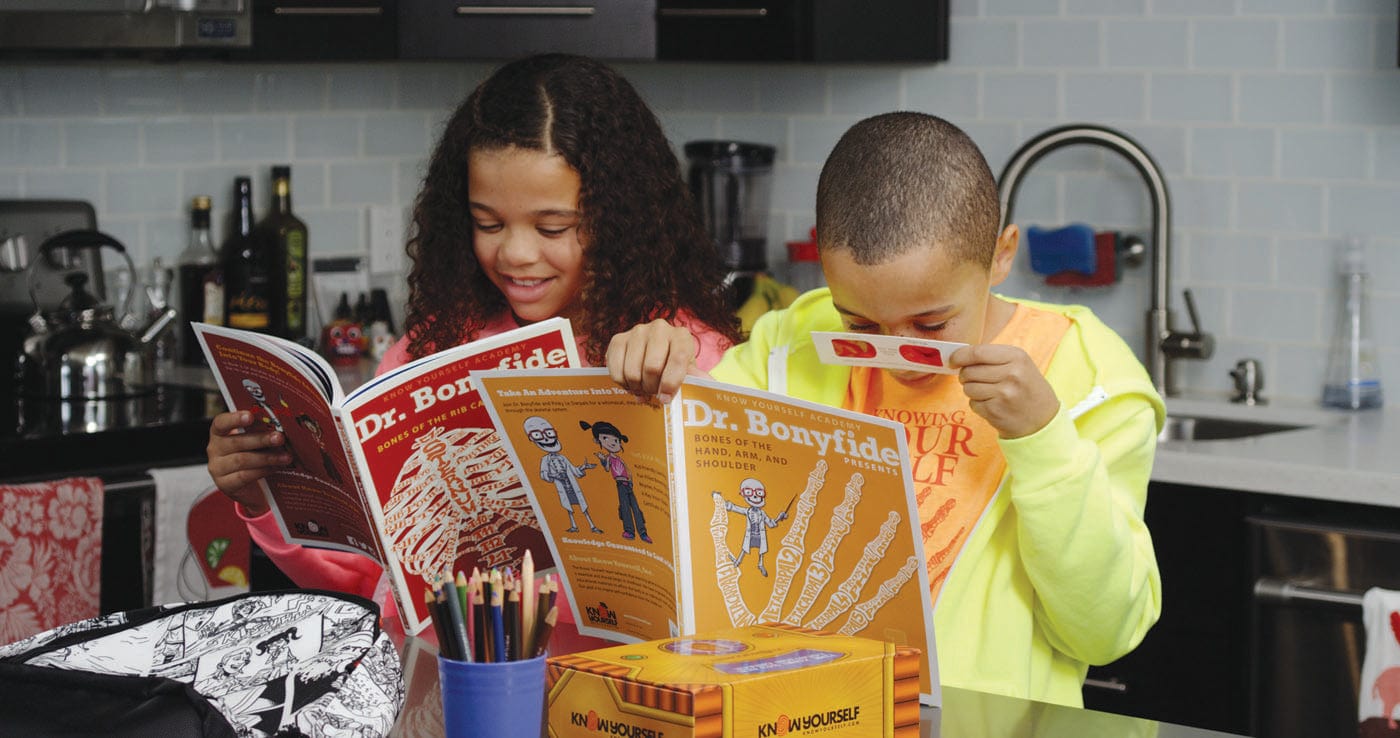
Listen up, my fellow microscopic villains! I know all of us bacteria and viruses want to infiltrate the human body, but there are some serious forces we’ve got to know our way around if we’re going to be successful. Today we’re going to take a journey into the lymphatic system. While you may not hear about it as much as some other parts of the body, it has clever defenses waiting to foil us at every turn. Read on if you want to stand a chance of navigating its maze of crafty checkpoints standing in our way.
Leading the Charge: The Thymus
Before we even start our journey, you’re going to want to know about the thymus. The thymus is the captain of the Special Forces: it creates and grows T-cells* to maturity. These cells are then sent out to locations around the body where their job is to stop baddies like us. You can review how T-cells work back in Adventure 6 to further prepare, but now let’s move on to your trip through the body.
Choose Your Path
Some of you may start your invasion through the mouth or nose. There you’ll be stopped right away at the tonsils, patches of tissue at the back of the throat. The thymus has guards stationed there to inspect and destroy unwanted visitors. If you happen to make it past the tonsils to the small intestine (review the parts of the digestive tract in Adventure 5), you’ll be inspected again by the guards at the Peyer’s Patches, more specialized tissue intent on keeping invaders from infiltrating the body. You might hear tonsils and Peyer’s Patches going by a special name: MALTs, which is short for mucosa-associated lymphoid tissue.
And if you thought you didn’t have to worry about the appendix, I’ve got bad news for you: it’s also a MALT. The appendix has gotten a reputation for being useless, but it helps the body in a similar way to the tonsils and Peyer’s Patches. If that didn’t make things difficult enough for us, MALTs also generate special memory cells whose job is to identify us and alert the rest of the body should it encounter germs like us again.
What’s the tonsils’ favorite treat? A chocolate MALT.
By now you might be thinking: alright, clearly the odds are stacked against us entering from this route, why not come in another way?
Well, my friends, your other option presents an even more treacherous obstacle course. Say you’ve managed to make it into the bloodstream—you might think you’ve got it made! But the circulatory system is clever, too: it transfers nutrients to tissues at the capillary beds (refresh your knowledge of the circulatory system with Adventure 3) by leaking fluid out of tiny holes in the vessels—and you leak out of those holes too! You’ll find yourself in the interstitial (say it like this: “in-ter-STITCH-uhl”) space–that’s the area between tissues-- along with other bacteria and viruses that might have entered through a breach of the skin. You might even find abnormal cells here, which have mutated into something that could harm the body, like cancer cells.
Most of the fluid in this space gets returned to the blood vessels to continue circulating through the body. The fluid that’s left behind, called lymph (“limf”), must get returned to the blood somehow, otherwise it will cause swelling or edema (“eh-DEE-muh”). If you’re in this lymph fluid, you’ll eventually be taken into the lymph vessels when the pressure pushing on the vessels opens little flaps, like gates, and the fluid flows in...and then you’re in real trouble.
From there, you’ll be forced to flow with the fluid through the lymph nodes, which are like small, bean-shaped guard stations. These guard stations are divided into lymph nodules, where more of those specially trained immune cells are waiting to identify you and other harmful organisms. If they catch a lot of you and call for backup, the lymph nodes wills well up as more defenders join the attack. Once the lymph has filtered through the nodes, you’ll journey through the lymphatic ducts and subclavian veins and back into the bloodstream.
One More Challenge
If you thought you had made it safely through the system, there’s one more special organ you have to look out for: the spleen. The spleen is like a large lymph node, with even more specialized training. The blood circulates through lymphatic tissue, or white pulp, and then through the venous sinuses, which are chambers of the red pulp. As it moves through, it gets filtered by lymphocytes and macrophages,* yet another set of guards waiting to identify and destroy us. The spleen is a clever multitasker, as it also grabs old or damaged blood cells to remove them from circulation. It’s so smart that it recycles the useful parts of the retired blood cells, like iron, and sends them to various parts of the body for use.
*Recall that we discussed the special cells of the immune system in Adventure 6
I’m not going to sugar-coat it: if you want to infiltrate the body, the lymphatic system’s checkpoints filled with highly skilled defenders will do everything in their power to stand in your way. It’s almost a bonus that it drains fluid from tissues and filters out damaged blood cells in its spare time! For humans, it’s the body’s unsung hero; for us, a formidable foe.
To learn more about your circulatory system, join the Loops Crew in Adventure 3: The Circulatory System as they travel through Ancient China in the Adventure Series: 12 Systems of the Body!









Leave a comment (all fields required)